In the age of digital, in which screens are the norm The appeal of tangible printed material hasn't diminished. Whether it's for educational purposes for creative projects, simply to add an individual touch to the space, Physical Properties Of Covalent Compounds have become an invaluable source. The following article is a take a dive to the depths of "Physical Properties Of Covalent Compounds," exploring what they are, where you can find them, and ways they can help you improve many aspects of your daily life.
Get Latest Physical Properties Of Covalent Compounds Below

Physical Properties Of Covalent Compounds
Physical Properties Of Covalent Compounds - Physical Properties Of Covalent Compounds, Chemical Properties Of Covalent Compounds, Physical Characteristics Of Covalent Compounds, Physical Properties Of Covalent Bonds, 3 Physical Properties Of Covalent Compounds, Physical Properties Of Polar Covalent Compounds, 5 Physical Properties Of Covalent Compounds, Three Physical Properties Of Covalent Compounds, General Physical Properties Of Covalent Compounds, Physical Properties Of Simple Covalent Compounds
Molecular reactions Covalent compounds exhibit reactions in which the entire molecule undergoes a transformation The absence of strong electrical forces results in a sluggish pace of molecular reactions Physical and Chemical properties of covalent compounds Covalent compounds in a liquid state undergo evaporation
Physical properties of covalent compounds Covalent compounds form discrete molecules that can exist independently from each other in contrast to the crystal structure of ionic compounds in which formula units cannot exist individually but only as a part of a lattice of ions
Physical Properties Of Covalent Compounds offer a wide collection of printable materials online, at no cost. These resources come in many designs, including worksheets coloring pages, templates and many more. The attraction of printables that are free is their flexibility and accessibility.
More of Physical Properties Of Covalent Compounds
PPT Bonding PowerPoint Presentation Free Download ID 5339686
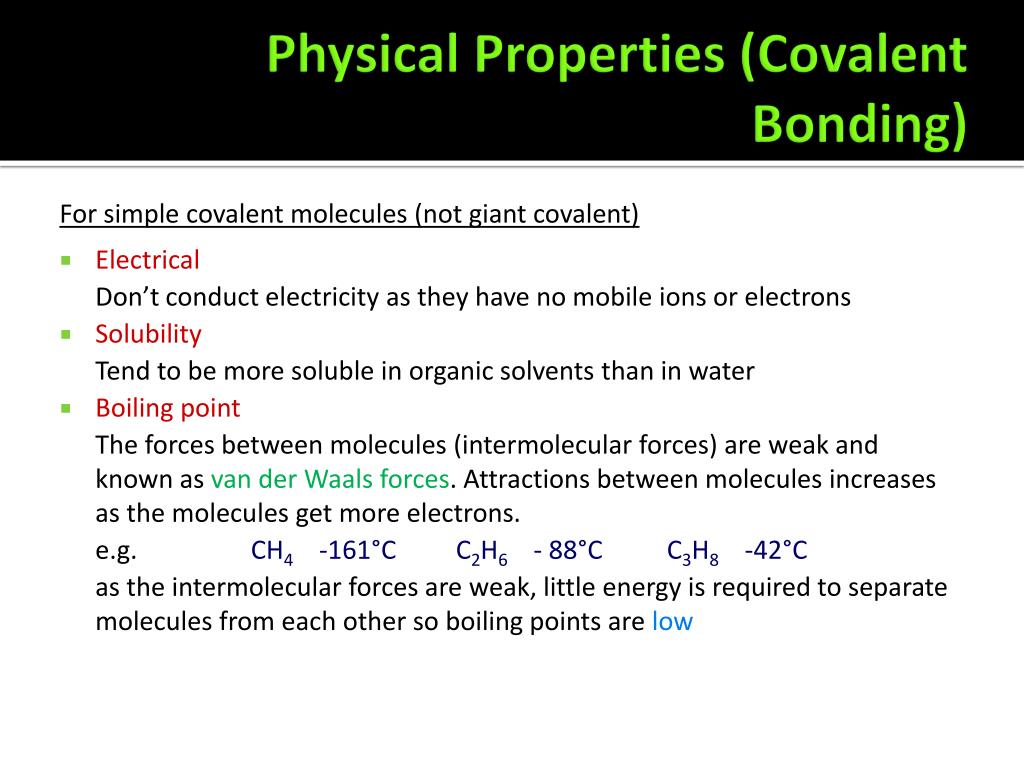
PPT Bonding PowerPoint Presentation Free Download ID 5339686
HCl hydrogen chloride CH 4 methane NH 3 ammonia CO 2 carbon dioxide Proteins Carbohydrates sugars and starch Lipids fats Nucleic acids DNA and RNA Note that organic compounds are all covalent compounds The Exceptions to the Rule In general if a molecule consists entirely of nonmetals you can assume it is a
What is a Covalent Compound Covalent compounds are the ones having strong intra molecular bonds This is because the atoms within the covalent molecules are very tightly held together Each molecule is indeed quite separate and the force of attraction between the individual molecules in a covalent compound tends to be weak
Physical Properties Of Covalent Compounds have gained immense popularity due to a myriad of compelling factors:
-
Cost-Efficiency: They eliminate the requirement to purchase physical copies or costly software.
-
customization: You can tailor printed materials to meet your requirements when it comes to designing invitations and schedules, or even decorating your home.
-
Educational Value: The free educational worksheets are designed to appeal to students of all ages. This makes them an essential source for educators and parents.
-
Convenience: immediate access an array of designs and templates cuts down on time and efforts.
Where to Find more Physical Properties Of Covalent Compounds
21 Lovely Naming Ionic Compounds Worksheet
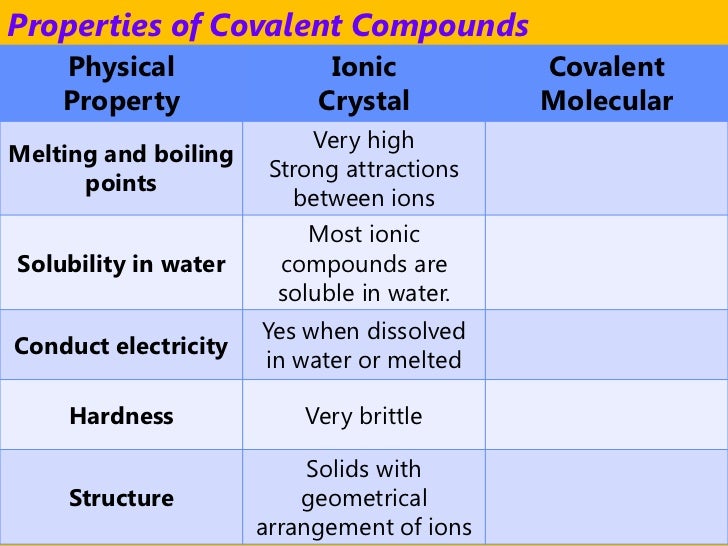
21 Lovely Naming Ionic Compounds Worksheet
General physical properties that can be explained by the covalent bonding model include boiling and melting points electrical conductivity bond strength and bond length Terms intermolecular forcesAttractive forces or interactions between different molecules in a sample of a substance
Covalent compounds generally have low boiling and melting points and are found in all three physical states at room temperature Covalent compounds do not conduct electricity this is because covalent compounds do not have charged particles capable of transporting electrons
After we've peaked your interest in Physical Properties Of Covalent Compounds Let's take a look at where you can locate these hidden gems:
1. Online Repositories
- Websites like Pinterest, Canva, and Etsy provide a variety of Physical Properties Of Covalent Compounds for various goals.
- Explore categories like the home, decor, crafting, and organization.
2. Educational Platforms
- Forums and educational websites often provide worksheets that can be printed for free or flashcards as well as learning tools.
- The perfect resource for parents, teachers, and students seeking supplemental resources.
3. Creative Blogs
- Many bloggers share their innovative designs and templates at no cost.
- The blogs covered cover a wide range of topics, everything from DIY projects to planning a party.
Maximizing Physical Properties Of Covalent Compounds
Here are some unique ways of making the most use of printables that are free:
1. Home Decor
- Print and frame beautiful art, quotes, as well as seasonal decorations, to embellish your living areas.
2. Education
- Use free printable worksheets to reinforce learning at home for the classroom.
3. Event Planning
- Create invitations, banners, and other decorations for special occasions such as weddings and birthdays.
4. Organization
- Keep track of your schedule with printable calendars as well as to-do lists and meal planners.
Conclusion
Physical Properties Of Covalent Compounds are a treasure trove filled with creative and practical information that cater to various needs and desires. Their access and versatility makes they a beneficial addition to both professional and personal lives. Explore the vast array of Physical Properties Of Covalent Compounds today and discover new possibilities!
Frequently Asked Questions (FAQs)
-
Are Physical Properties Of Covalent Compounds really cost-free?
- Yes they are! You can print and download these resources at no cost.
-
Are there any free printables for commercial purposes?
- It's based on specific conditions of use. Always consult the author's guidelines before using any printables on commercial projects.
-
Are there any copyright violations with Physical Properties Of Covalent Compounds?
- Certain printables may be subject to restrictions in use. Make sure you read the terms and conditions provided by the creator.
-
How do I print Physical Properties Of Covalent Compounds?
- Print them at home using the printer, or go to an area print shop for the highest quality prints.
-
What software will I need to access printables for free?
- A majority of printed materials are in the format of PDF, which can be opened with free software such as Adobe Reader.
Covalent Compounds Examples And Properties My XXX Hot Girl

PPT Unit 6 Introduction To Chemistry PowerPoint Presentation Free
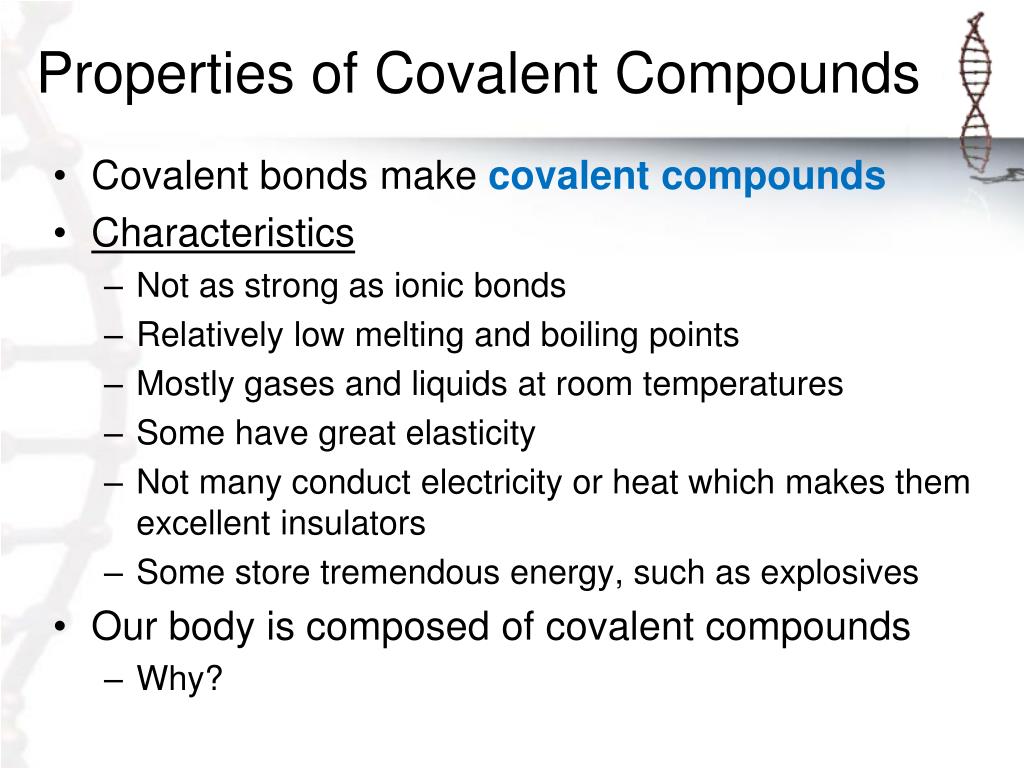
Check more sample of Physical Properties Of Covalent Compounds below
Chemistry 4 2 Properties Of Ionic And Covalent Compounds YouTube

PPT 2 3 Classifying Chemical Compounds Properties Of Ionic And
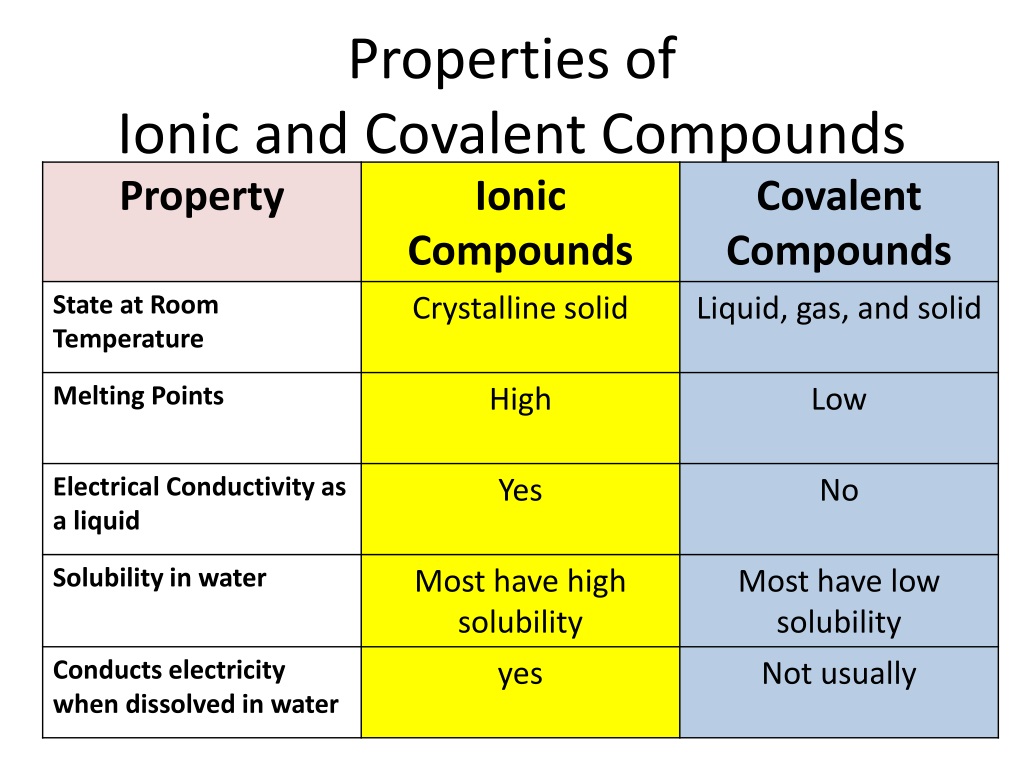
CH150 Chapter 4 Covalent Bonds And Molecular Compounds Chemistry
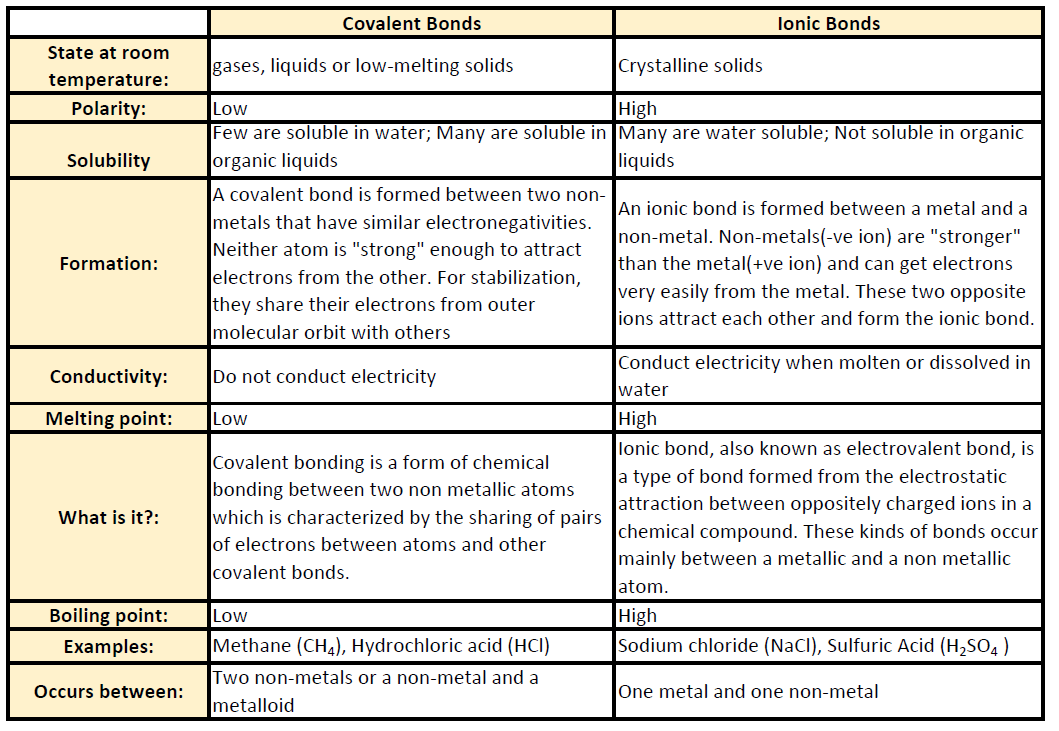
Examples Of Covalent Bonds And Compounds
/CovalentCompound-58dd60f93df78c51621370cc.jpg)
Comparison Of Ionic And Covalent Compounds

Chemistry MPSJ Grade 10 Academic Science


https://chem.libretexts.org/Courses/Brevard_College/CHE_103...
Physical properties of covalent compounds Covalent compounds form discrete molecules that can exist independently from each other in contrast to the crystal structure of ionic compounds in which formula units cannot exist individually but only as a part of a lattice of ions

https://byjus.com/jee/covalent-bond
A covalent bond is formed by the equal sharing of electrons from both participating atoms The pair of electrons participating in this type of bonding is called a shared pair or bonding pair Covalent bonds are also called molecular bonds
Physical properties of covalent compounds Covalent compounds form discrete molecules that can exist independently from each other in contrast to the crystal structure of ionic compounds in which formula units cannot exist individually but only as a part of a lattice of ions
A covalent bond is formed by the equal sharing of electrons from both participating atoms The pair of electrons participating in this type of bonding is called a shared pair or bonding pair Covalent bonds are also called molecular bonds
/CovalentCompound-58dd60f93df78c51621370cc.jpg)
Examples Of Covalent Bonds And Compounds

PPT 2 3 Classifying Chemical Compounds Properties Of Ionic And

Comparison Of Ionic And Covalent Compounds

Chemistry MPSJ Grade 10 Academic Science
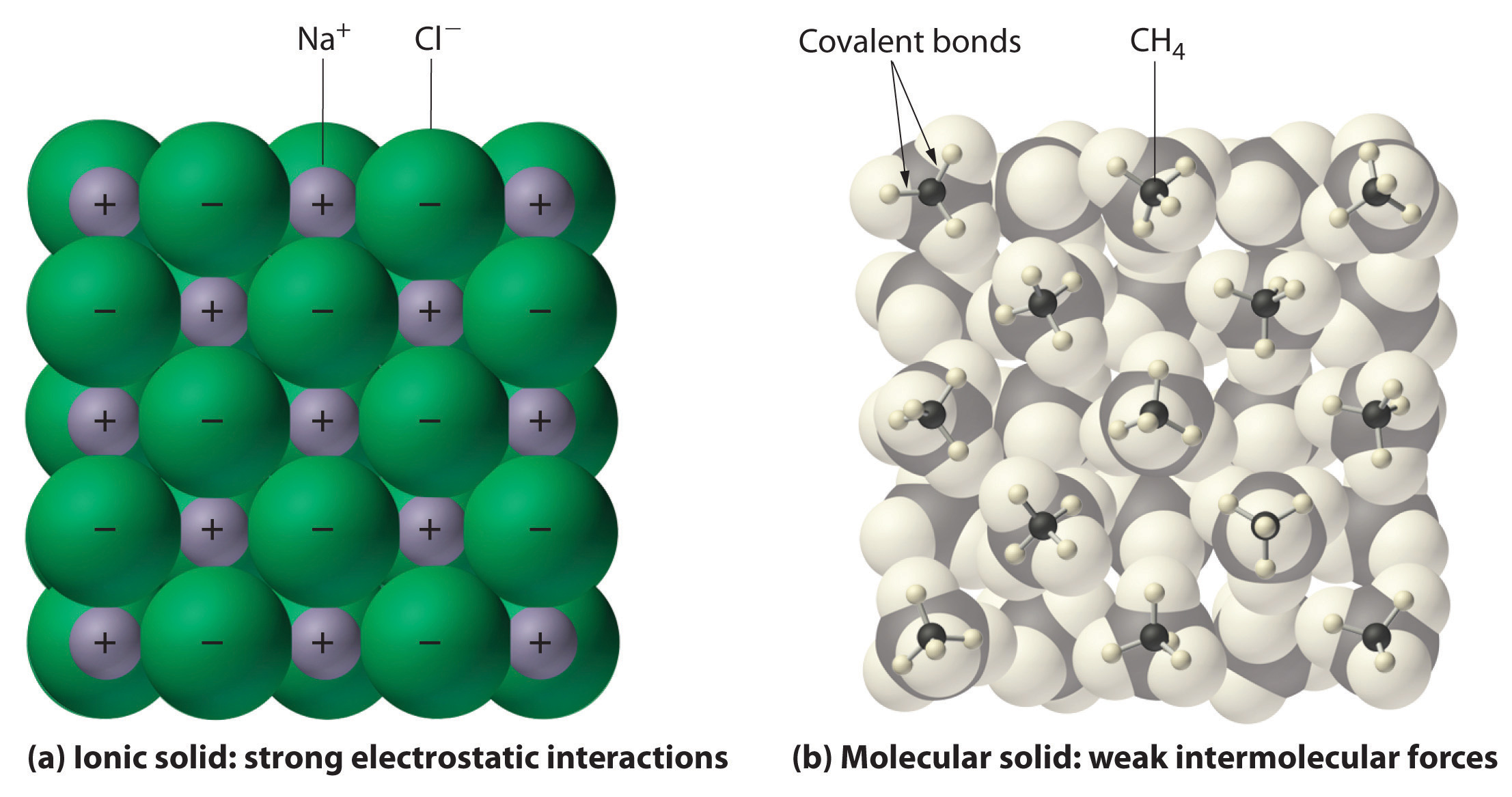
7 1 Comparing Ionic And Molecular Substances Chemistry LibreTexts
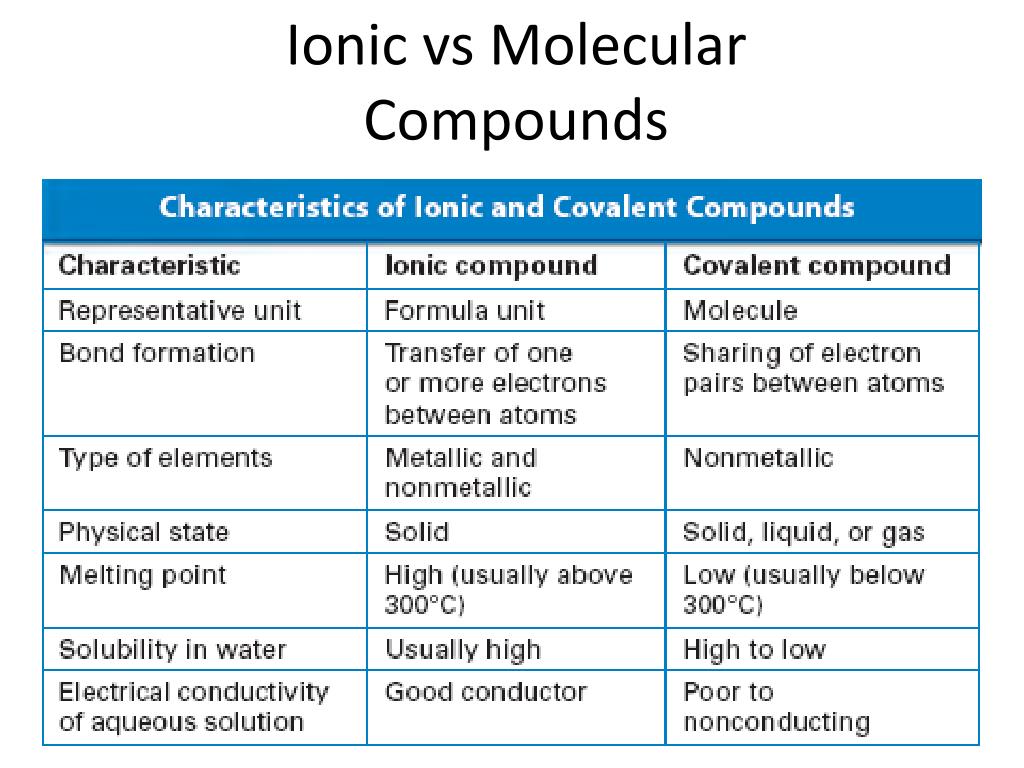
Physical Properties Of Molecular Compounds Sciencestudy

Physical Properties Of Molecular Compounds Sciencestudy

4 3 Structure And Properties Of Covalent Compounds SL YouTube